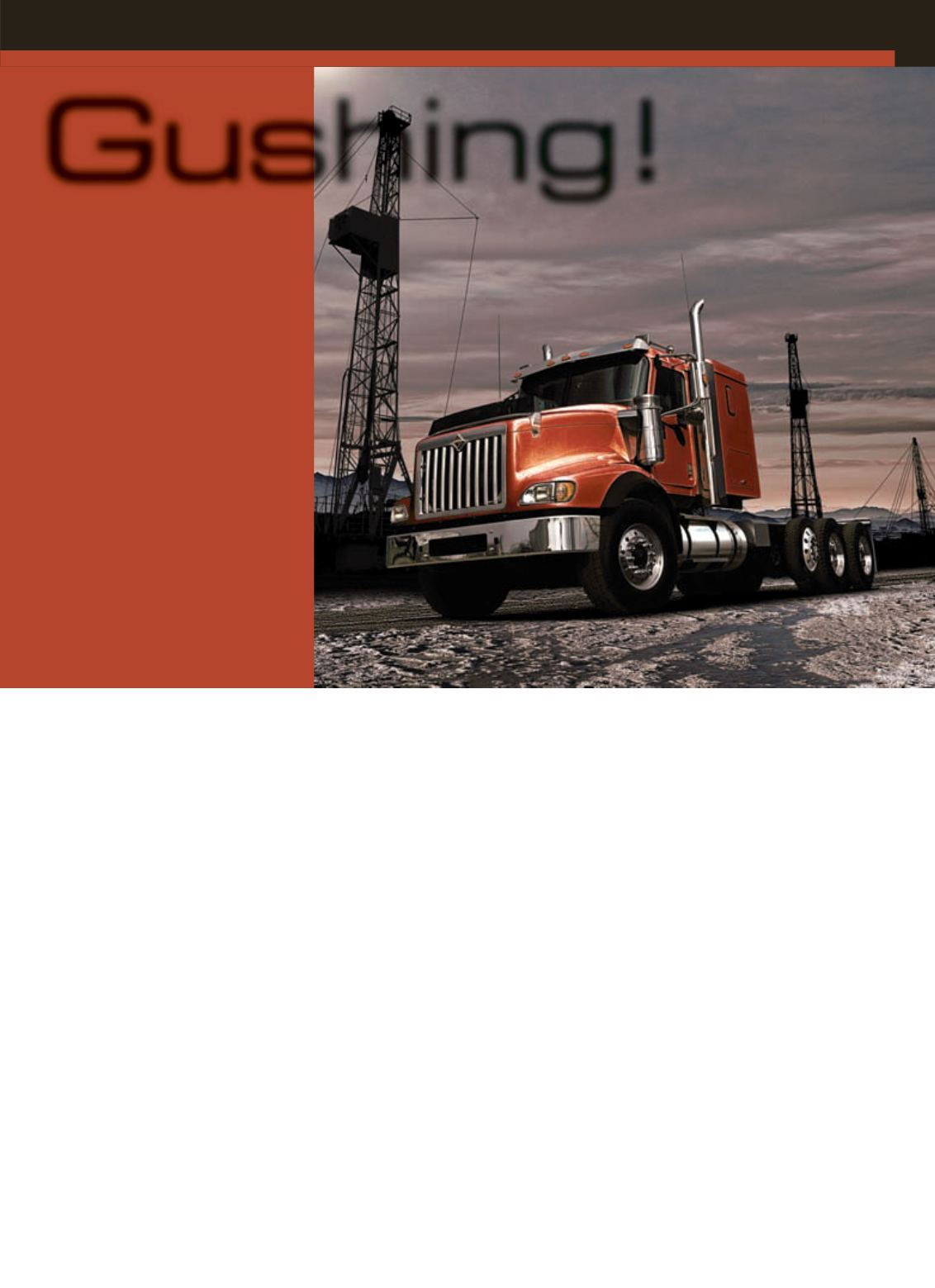
25
AUGUST 2013
ACT
ACT’s
Terry White
reports that U.S. oil
and gas production
has surged, giving
new energy to the
crane and specialized
transportation sectors.
Gushing!
E
conomists and investors
seem to be gushing about the
prospects for American oil
and gas production. Late last year, the
International Energy Agency (IEA)
forecast that the United States will pass
Saudi Arabia as the world’s leading oil
producer within a decade. In IEA’s central
scenario, the U.S. becomes a net exporter
of natural gas by 2020 and North America
emerges as a net oil exporter by 2035.
Supporting IEA’s prediction was new
data released on April 30 by the United
States Geological Survey (USGS), which
indicated that 7.4 billion barrels of oil
could be recovered from two massive
shale formations spanning parts of North
Dakota, South Dakota and Montana. That
nearly doubles previous USGS estimates.
In addition to oil, the two formations
contain an estimated 6.7 trillion cubic feet
of undiscovered, technically recoverable
natural gas and 0.53 billion barrels of
undiscovered, technically recoverable
natural gas liquids.
Conoco recently announced that over
half of its nearly $15 billion budget for this
year would be spent in North America.
The company’s oil and gas production
producers the ability to drill lengthwise
through shale deposits and tap previously
inaccessible sources of oil and natural
gas. Reaching and extracting these
resources from the ground requires
rugged equipment. Moreover, the
companies supplying this equipment face
additional challenges because the fields
typically lie beneath rough terrains and
remote locations. In response, equipment
manufacturers and users are changing as
rapidly as the nature of the work.
For example, at the Marcellus Shale
natural gas fields in Pennsylvania,
National Crane boom trucks insert
wire-line cabling and related tools into
several natural gas and oil well sites. In
the past, mast trucks handled a majority
of work in such fields, but that forced
operators to move these vehicle for every
lift, tediously rigging and un-rigging the
winch mechanisms each time. Now, crane
operators can rig a boom truck for several
lifts from the same spot, saving time and
money.
“We need all the cranes we use on the
gas and oil field to have at least 125 feet
of main boom so that we can place tools
into multiple wells without having to move
rose a combined 42 percent in North
Dakota’s Bakken shale and Texas’ Permian
Basin and Eagle Ford shale. Meanwhile,
Exxon’s U.S. oil and natural gas production
increased 2 percent in the first quarter,
compared with a worldwide output decline
of 3.5 percent.
This all comes atop a U.S. natural gas
production jump of one-third from 2005
to 2012. Last year, natural gas production
reached an all-time high of 25.3 trillion
cubic feet, according to the U.S. Energy
Information Administration.
Plenty of signs indicate this increased
oil and natural gas production already is
reenergizing the specialized transport and
rigging industry. Much of the attention has
turned to fracking, the industry nickname
for a process officially known as hydraulic
fracturing, which involves blasting
millions of gallons of water, sand and
chemicals into substrate rock. The intense
pressure creates fractures in the rock layer
and allows easier access to the oil and gas
beneath.
Fracking bonanza
New horizontal and directional fracking
processes have given oil and natural gas
Navistar International designed
its PayStar 5900 SBA with
remote oil fields in mind.
OIL & GAS
INDUSTRY REPORT


